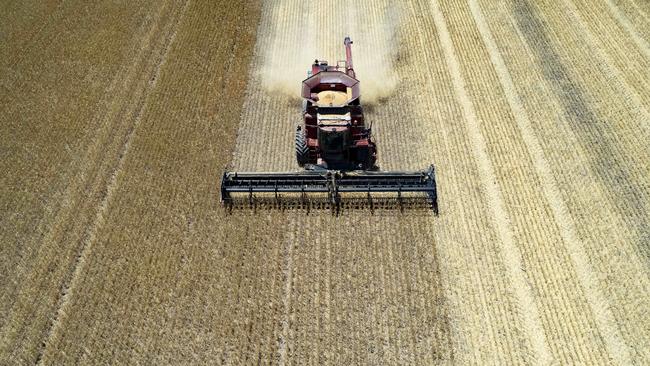
Even food supplies in impoverished parts of the world are a potential casualty of this conflict.
In Australia, hardly any of us have noticed that our country – seen as a pariah at the Glasgow climate summit last year – has quietly emerged as one of the worthier nations of the world. Australian children, who in primary school often are instructed that their country has so much of which to be ashamed, will have to be told that at present it is a global benefactor.
The contrasting stories of farming and food production in Ukraine and Australia could teach us a lesson. Across Ukraine and the southwest corner of Russia is one of the world’s most extensive layers of that black soil the Russians call chernozem. Rich in decomposed plants, it is as fertile as a first-rate compost heap. Ukraine’s black soil occupies two-thirds of the arable land in a nation that has a higher proportion of arable land than all but two other countries on earth, Denmark and Bangladesh.
Indeed, the plains in the eastern half of Ukraine resemble one colossal farm. To the west the nation’s terrain is hilly, with a narrow strip of mountains, but the tallest peaks are not even as high as those in our own Snowy Mountains.
Ukraine’s 40 million inhabitants are entitled be proud of their farmers and fiercely indignant that their grain stores and soils are being wrecked in places by Russian soldiers. In contrast, Australia’s farmers have a very different set of achievements. Their country has the world’s largest area of soil with major deficiencies and is the custodian of huge areas of desert, yet this year it is helping to feed about 50 countries and tens of millions of the most malnourished people.
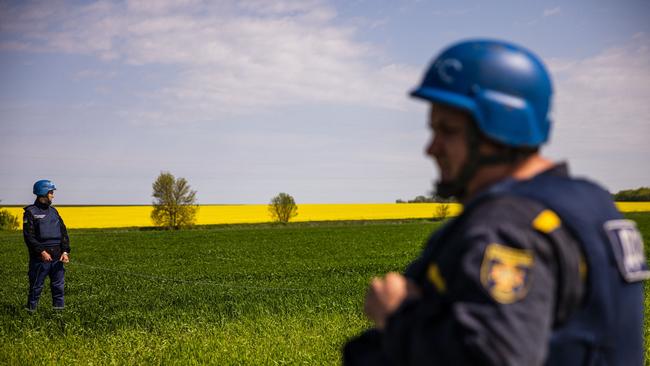
To praise Australia is not to belittle Ukraine. In a normal year Ukrainian wheat, maize and barley feed a host of people in distant lands; half of its cereal exports are shipped to Asia.
The damage to Ukraine’s diverse grain-belt with its wheat and corn and barley is causing increasing concern. Many farms are damaged severely; explosives and booby traps have been laid on the edge of some farmlands; and grain from last year’s harvest is pilfered from silos and trucked away by the invading Russians. Even the lumbering farm machinery, similar to the costly combine-harvesters in our wheatbelt, has been stolen by the invaders.
The harvest, normally at its busiest in just a few months, will certainly be much lower than last year’s and there is no likelihood that the surplus usually set aside for export will even reach the crucial Black Sea ports.
Mariupol, now a wreck of a city, is a wheat port as well as a hub of heavy industry. The biggest wheat port, Odesa, and various oil and wheat facilities and high-rise apartments have been hit by Russian missiles. Only as old as Sydney, this celebrated city with its terrace of 192 stone steps leading to the waterfront (I once tried and failed to count them) was the setting of a highlight in the history of cinema, the Battleship Potemkin mutiny.
The Black Sea is easily blockaded. The damaged Russian warship that sensationally was sunk in mid-April while being towed to Odesa had been a blockader. If the war soon ends, the control of the Black Sea will become crucial. If Russian President Vladimir Putin is the victor he will totally command all the wheat ports of the Black Sea, but he will not thereby control the narrow and all-important strait near Gallipoli. Both sides of the strait are owned by Turkey. Almost certainly the US and west European powers can block the strait at the Mediterranean end if necessary.
We must remember that the battles at Gallipoli in 1915 were fought close to that narrow entrance from the Mediterranean into the Black Sea.
A major aim of the British, French and Anzac forces landing at Gallipoli was to seize and open up the narrow strait called the Dardanelles so Allied cargo ships could carry munitions, military equipment and essential supplies to Odesa and so onwards by railway to strengthen Russia’s huge but ill-equipped army fighting the German and Austro-Hungarian forces on the war’s eastern front.
If there had been a victory at Gallipoli, those same ships could have carried as return cargo the wheat and barley from Ukraine and other Russian territories.
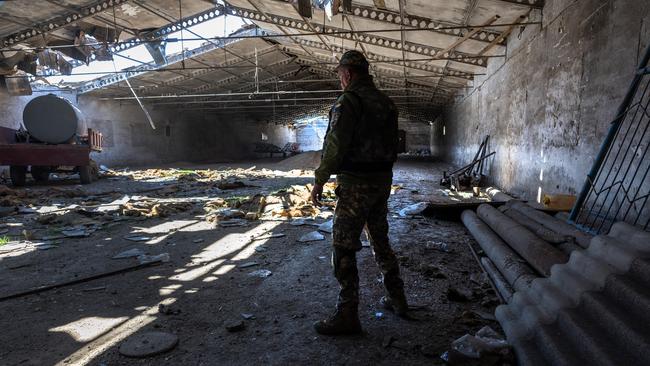
During World War I, in London and Paris, Berlin and Vienna, a grave shortage of food – and the risk of rioting by hungry civilians – was widely feared. In 1917 the revolutions in Russia and in 1918 the military defeat of Germany both stemmed from a shortage of bread as well as from defeat in battles on land. We rightly praise John Monash for his victories against the German army on French soil in 1918, in the last months of the war; but the long blockade conducted by the British navy in the North Sea had already weakened German morale at home and in the trenches by inflicting hunger on millions of its people.
Even today in numerous African and Middle East nations a shortage of bread is viewed as a potential cause of civil unrest. The price of bread was often high in the period 2007 to early 2012, and hunger possibly contributed to the Arab Spring and the wave of political unrest in North Africa.
One fact rarely noticed is that three of the world’s five largest wheat importers in 2020 were Muslim nations. Egypt was the largest, followed by Indonesia and Turkey. A fourth nation, Nigeria, has recently become more a Muslim than a Christian nation.
The other nation standing in the top five importers of wheat is China. Though it has revolutionised its agriculture since the famines of the early 1960s, it cannot feed every one of those hundreds of million inhabitants who prefer wheat to rice, and so it has to import a small percentage of the massive quantities of wheat that it mills into flour. If we turn to rice, a grain that is high in moisture and low in calories compared with wheat, China is also a leading producer and a minor exporter, though far behind India which, to its credit, has become the globe’s largest exporter of rice.
China and India as hot spots of malnutrition have been replaced by Arab nations in a typical year. According to an authoritative report issued in June last year, one-quarter of Arab children under the age of five were defined as stunted.
Egypt and its 101 million people – a larger population than any nation in the EU and still growing swiftly – now depend on foreign wheat. The country’s local output of grain always lags far behind the imports. In Cairo the government operates the ingenious Baladi subsidy scheme, which provides – largely from imported grain – cheap bread for more than half of the population.
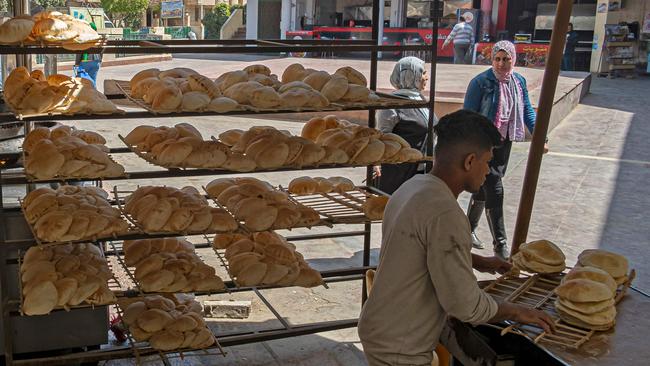
Ukraine and Russia in recent years have supplied most of the grain used by Egyptian flour mills and bakehouses. Here is an exceptional somersault in world history. Egypt’s Nile Valley was a major supplier of wheat to the Roman Empire in its heyday. In the past decade, however, millions of Egyptians would have starved to death without the frequent arrival of food ships, some of which come from Australia.
The Middle East nation that depends most heavily on Australian grain is Yemen. One of the poorest nations in the world, its farms are noted more for their sheep and goats, asses and camels than their cereals, and its schools are notorious for the low attendance of girls. Yemen’s population, doubling every 20 or so years, has already passed Australia’s.
Lying near the entrance to the Red Sea, its main maritime city, Aden, was once a port of call for nearly all migrant ships bound from Europe to Australia. Today ships arriving from Australia are loaded with grain and in some years Yemen has been the third largest export destination for Australian wheat, and often exceeding Indonesia.
In the past two years especially, we have been a huge exporter of wheat to East Asia. In Indonesia, countless families who ate their daily bread or noodles made from wheat grown mainly in what is now the war zone in Ukraine now consume bread from Australian white-wheat flour.
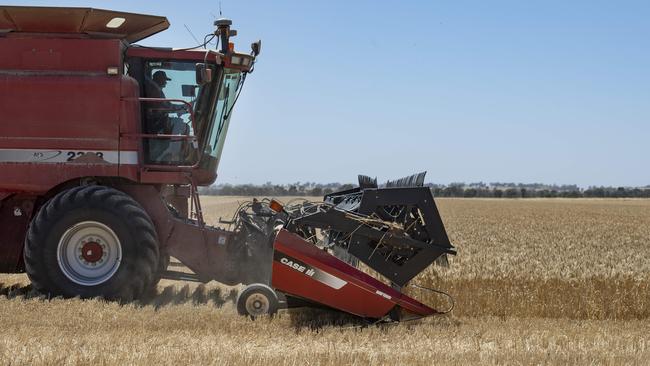
In some months, Indonesia is the world’s largest importer of wheat, while The Philippines, Vietnam, South Korea, Japan and now China are also large importers of Australian wheat. Australia is one of the five or six main wheat and barley exporters in the world and a major power if a world food shortage should arise.
A forthright warning has come from the UN official who heads the World Food Program. A former Republican governor of South Carolina, David Beasley informed the Security Council on March 30 of the possibility of the worst food crisis since World War II – a warning, however, that he did not substantiate. He glimpsed, if the dislocating war continued for many months, “a catastrophe on top of a catastrophe”. He has since repeated the warning.
Much of Beasley’s gloom reflects the situation in Ukraine’s wheat belt where brave farmers were walking away from their crops to be volunteer soldiers. He called Ukraine “the bread basket of the world”. But Ukraine has never been the world’s largest grower and exporter of wheat. In a normal year its total production of wheat, though vital, is below that of the EU, China, India and Russia.
Beasley was courageous in pointing to a flood of refugees that might arise in famished lands if the military crisis persisted. Though he did not elaborate, it is possible that tensions in the overpopulated nations on the southern and eastern shores of the Mediterranean might well propel a flow of refugees towards Spain, Italy and Greece.
We know that since February, trains packed with Ukrainian refugees have been welcomed by Poland, Hungary and other neighbouring nations. But if the war continues, the famished refugees reaching Europe’s Mediterranean shores in overloaded boats are even less likely to be welcomed.
In the past five years Italy has turned back 82,000 illegal migrants who made the short voyage from Libya to Sicily. Likewise Angela Merkel’s experiment of welcoming into Germany one million Middle Eastern refugees was so controversial that it is unlikely to be repeated.
To Africa, Russia was the largest supplier of wheat in 2020. Then follow France, Ukraine and Canada; Australia also ships wheat. Though Africa’s host of small farmers produce in total more cereals than are imported, the incoming ships crammed with wheat are crucial in a crisis.
In the total scheme of things, the food grains imported into Africa are far outweighed by the food that comes from other plants grown in the myriad African villages. Likewise in Pakistan it is estimated that more than half of the nation’s wheat is consumed by the same family members who grow it. Of course they can’t eat it all because bags of grain have to be set aside as seed for the next season’s sowing.
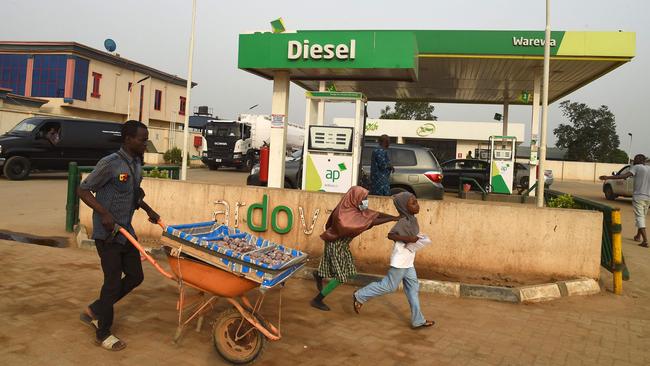
In this simple old-time world, if a harvest is poor, a government will try to import grain. As shipments from the Black Sea are highly unlikely, the Third World nations that urgently need wheat will pay dearly for it on the world market in the following months – even after a ceasefire or a fragile period of peace begins in eastern Europe.
I detect one justification for optimism around the world. Despite the fear that climate change cannot yet be coped with, and despite the knowledge that the world’s population is soaring and thus leading to more emissions of carbon dioxide, one fact is rarely mentioned. The world’s population has increased by about 50 per cent since 1990 or since the end of the Cold War, but the world’s production of food has increased at a faster pace.
In our nation, the gap in attitudes between city and countryside is wider than ever, and in a city-dominated election campaign the farms and their contribution to the economy are barely touched on. Yet we hardly hear the news that agriculture here – highly efficient and innovative by world standards – has just experienced two prolific harvests. Last summer in Western Australia and NSW the wheat harvest, for example, has been sensational.
Thus the lives of tens of millions of adults and children on the far side of the equator will be saved or prolonged.
The past two years have been record-breaking for Australian wheat and barley and canola crops, in aggregate. It is almost certain that no matching period in our history has been so productive. While the recent floods in northern NSW have been devastating, and are seen by some scientists as proof that our climate is somewhat out of control, there is hardly a mention of the fact the grain harvests in vast areas of inland Australia have been wonderful and a reason for intense satisfaction.
Geoffrey Blainey has written 40 books. His most recent is Before I Forget: An Early Memoir.







The war in Ukraine is studded with shocks and surprises. The multitude of deaths, suffered especially by Russia, is much higher than was anticipated, and a global energy crisis is feared.